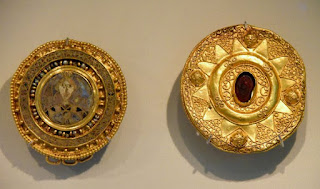Byzantine books from Gorgias Press
Sherry, Kurt. Kassia the Nun in Context
Kassia the Nun offers a unique glimpse into ninth-century Byzantium as the only woman whose works were included in the corpus of liturgical hymns. Kassia the Nun in Context explores Kassia’s thought on Christology, on gender, and on monasticism itself.Balivet, Michel. Byzantins et ottomans
Kurt Sherry’s analysis provides readers with an opportunity to know this woman of remarkable intellect, wit, and piety by drawing primarily on her own words. He critically examines the most famous vignette of her life: a heated exchange of wits with the Emperor Theophilos, whereupon he married a rival. Sherry examines the way Kassia articulated the partisan theology of the iconophiles. Kassia’s is one of the only female voices from ninth-century Byzantium and this volume accordingly examines her reflections on gender in the context of her society and concludes that she represents a perspective that might be described as feminist. The last chapter evaluates Kassia’s philosophy of monasticism and puts her forward as a true “Mother of the Church.” Kassia the Nun in Context has appendices helpful for both the scholar and layperson alike, including new English translations of certain relevant texts.
For a very long time, scholars within Turkish and Byzantine studies did not profit much from each other’s research or primary sources, in part due to a language barrier. When sources were finally compared, we learned of interesting phenomena such as the occurrence of interreligious marriages, and the complexity and fluidity of identity, as testified by the existence of Turcophone Christians (karamanlidhes) and Hellopohone Muslims (giritli). In this book, Michel Balivet, professor at the University of Provence, offers a comprehensive study of Turco-Greek relations from the Byzantine period and through the Seljuk and Ottoman eras, drawing on his twenty years of research in the field. Although the Byzantine Empire was chronologically followed by the Ottoman Empire as a hegemonic political power, he shows that the cultural Byzantine influence did not disappear overnight. This book demonstrates that rather than being passive neighbours for nine centuries, Greeks and Turks were involved in an active exchange. Numerous dimensions of this contact, from linguistic exchange to philosophical encounters and mystical contact, are explored in this excellent book.



Comments
Post a Comment